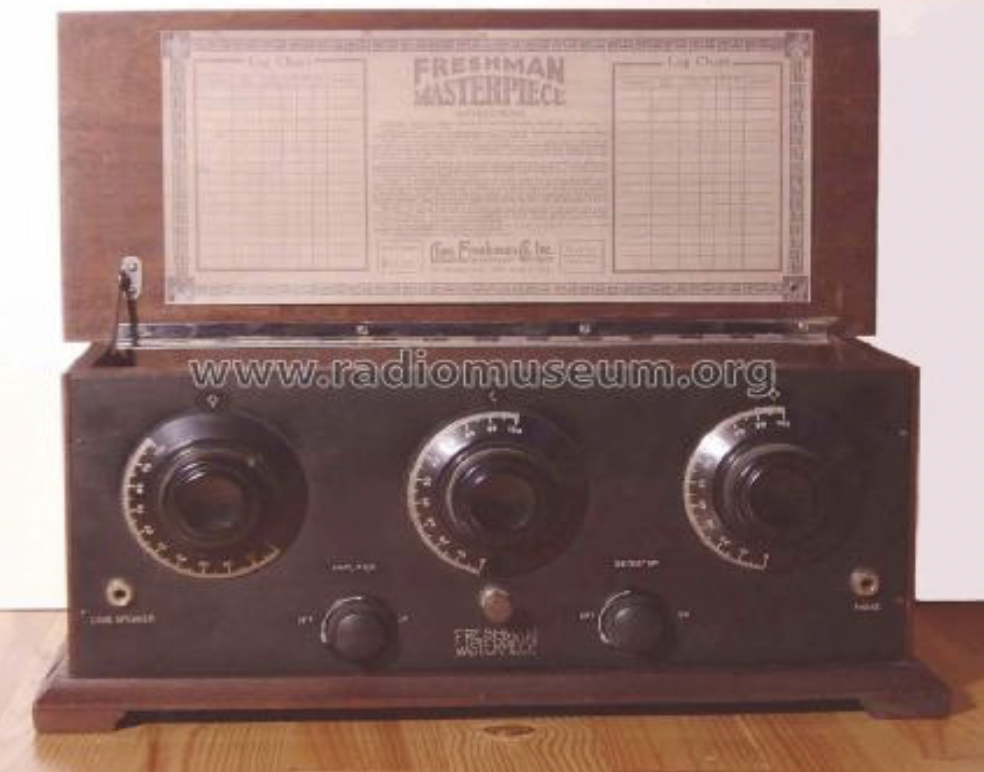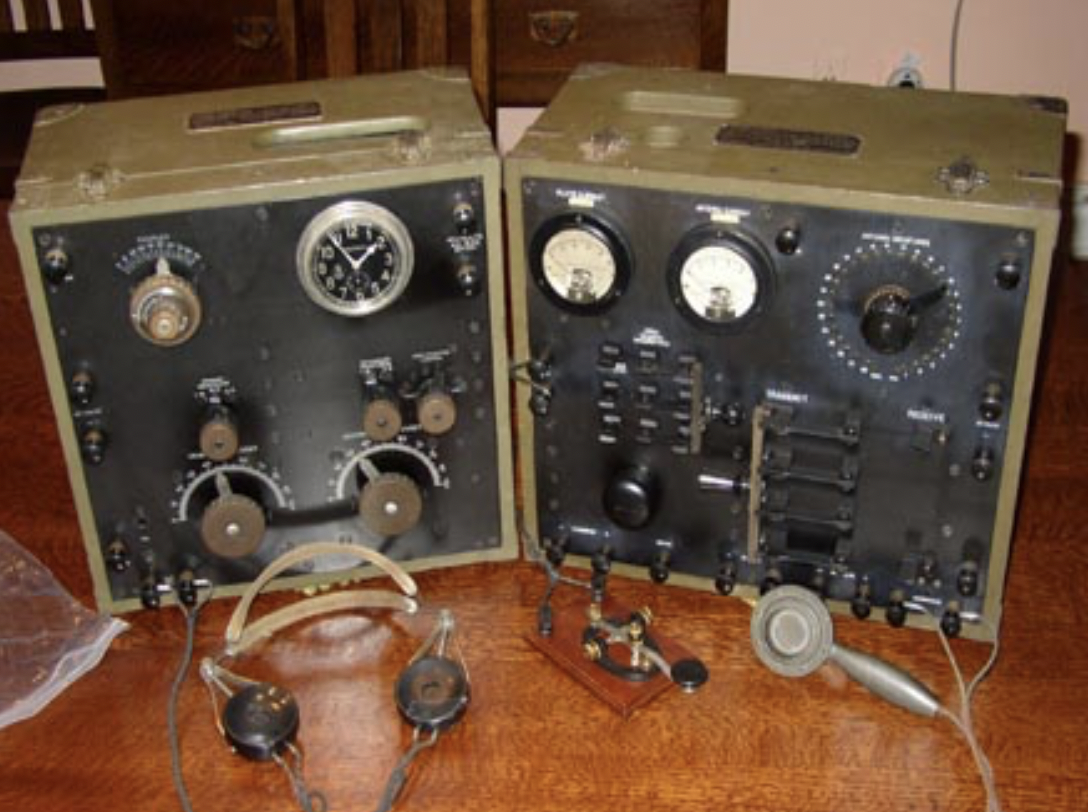In today’s society, we would consider the radio the device in our car that plays music. However, back in the 1800’s the radio was a very different product used more for communication. The idea of the radio was first established in 1888 when Heinrich Hertz detected and produced radio waves(WCBN). Since then, many people have worked on developing the product that we use today, the car radio; however, there were many uses before we got to the musical radio. The inclination of the radio occurred when it became a public way to relay information. The radio’s declination followed much further after when the radio was reduced to a music platform and news streaming device that would be overpowered by new technologies.
After the detected of radio waves, the beginning phase of the radio was the electronic telegraph. A piece of technology that “revolutionized long-distance communication” and paved the way for more advancements (Thomas White). Soon after in 1906, the first radio program of voice and music was broadcasted in the United States by R.A. Fessenden (WCBN). This broadcast opened up countless more applications for the United States to make regarding the radio. In 1915, widespread broadcasting became possible (Willard Marriott Library). The ability to broadcast messages was extremely important especially in the year 1917 when the United States entered World War I and needed ways to communicate quickly. This made the radio a coveted and dangerous item (Willard Marriott Library). In 1919, the shortwave radio was developed, and the Radio Corporation of America was founded (WCBN). This was a pivotal point for radios because they started to make a strong impact on society through communication. From this point on, many stations began to emerge and report the news to anyone who had the means to listen. With more advancements in progress, the telephone became a very realistic invention. In 1924, Bell Labs created the first two-way, voice-based radio telephone (Transition FCC). This radio telephone marks the start of wireless communication between two individuals. In 1935, frequency modulation (FM) radio was born (WCBN). In 1945, the television was coming to life thanks to the technology of the radio (William Richter). And in 1946, Bell initiated America’s first commercial mobile radio telephone system (Transition FCC). From then on out, more news cast were produced, and more radio stations were created. Radio’s became both a form of entertainment and communication among everyone.
The radio was present in cars, homes, and shops. Ninety five percent of American cars have radio, and between six A.M. and six P.M. more people use radio than television, newspapers, or magazines (William Richter). The radio was considered by many to be our first national medium (William Richter). The radio provided something new that our country could not previously experience. It allowed the country to hear and share one moment together via news. In addition, it brought along a quick, easy, and personal way to communicate. Additionally, the radio promoted music culture. Music was something that could now be broadcasted and in turn be listened to and appreciated more (Saylor Dotorg). The radio made music extremely popular among many people and made it into a daily form of entertainment. However, the radio produced more than just music.
The radio became a form of mass media. Because the radio was able to relay news, messages, and music, it made a massive impact in society. It used to take days, weeks, or even months to relay news across the country, but with the radio everyone could share one special moment together (William Richter). For example, in 1937 when the rivers in Ohio and Mississippi flooded, the radio brought voices to the people in the floods and out of them. It allowed for hope to be communicated to anyone who was listening (Saylor Dotorg). Another example of how the radio allowed for communication was through Franklin D. Roosevelts “fireside chats” (Saylor Dotorg). These chats were and are still extremely famous today. Roosevelt used the radio as a political platform to speak out to the people and explain to them what and why he was making certain decisions. These uses of the radio shined through as peaks of invention at the time. However, the radio’s popularity didn’t last forever.
The radio today is still used to occasionally play music and listen to the news; however, newer, more effective technologies have taken its place. The one-on-one communication that the radio used to be known for evolved into the telephone and cellphone. In addition, the news is much more popular on television now within channels and stations. Finally, music has moved online to different streaming platforms like Apple Music and Spotify. While the radio isn’t used much anymore, it paved the way for several crucial pieces of technology that we use constantly in our society today.


Works Cited
“The Beginning of Broadcast Radio.” Youtube, J Willard Marriott Library, 2011, https://www.youtube.com/watch?v=qtpOoJzjIT0. This source provided me with a video that spoke about changes and broadcasting in the 1900’s. The beginning of this broadcast was helpful because it gave me a couple facts and it was an interesting video all the way through. It didn’t give me too much information that was very helpful though, so I only used it a little bit.
Catalogue. “Masterpiece 1st Table Model.” Masterpiece 1st Table Model. Radio Freshman Co. Inc.,www.radiomuseum.org/r/freshmanco_masterpiece_first_table_m.html. This is a museum website that carries several pictures of old radios. This source was just used for a photo.
“CBN History: Radio/Broadcasting Timeline.” WCBN, wcbn.org/history/wcbntime.html. This source was a detailed timeline of all the advancements made within the invention of the radio. This was an extremely helpful source for the timeline of my essay. It was easy to read and analyze and gave helpful facts.
Dotorg, Saylor. “Radio’s Impact on Culture.” Radio’s Impact on Culture, saylordotorg.github.io/text_understanding-media-and-culture-an-introduction-to-mass-communication/s10-03-radio-s-impact-on-culture.html. This source touched on how the radio has shaped our present days lives which was very interesting, and I enjoyed reading all of it. I used a lot of the information that regarded the impacts of the radio in my essay.
Richter, William A. Radio - a Complete Guide to the Industry. Peter Lang Publishing Inc, 2006. https://web-a-ebscohostcom.ezproxy.wlu.edu/ehost/pdfviewer/pdfviewer. This book was a book about the radio and how it developed to affect society and other technologies. This book was very helpful, and I cited it a lot. The first two chapters I used the most and they gave me the best information regarding my essay. It was clear, concise, and had a large range of information.
“A Short History of the Radio.” Transition FCC, 2004, transition.fcc.gov/omd/history/radio/documents/short_history.pdf. This source for a short history of the radio and who was involved inventing it and how it progressed. This article had a couple great facts that I used. I attempted to extract the most important parts for my paper.
Stone Vintage Radio, https://www.stonevintageradio.com/items.php?CA=5&UID=. This was a website that I found looking at old pictures of cameras on google images. This source was used for a photo.
White, Thomas. “United States Early Radio History.” United States Early Radio History, earlyradiohistory.us/. This was a great source for dates along with little facts about the radio and the steps the invention took. I used it mostly for dates and names of radio advancements.
Word Count: 949